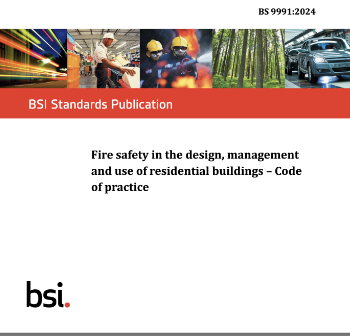Scott schedule
Scott schedules (sometimes referred to as ‘official referee schedules') were originally developed by George Alexander Scott, a surveyor and official referee, for use in building disputes. They are now commonly used for a variety of legal cases that involve complex arbitration where there are numerous claims, including; property law, family law, employment tribunals and so on.
A Scott schedule is essentially a table with inputs from both the claimant and respondent. Typically the claimant will set out their argument first, then the schedule is passed to the respondent to set out their response. This requires a degree of collaboration between the parties.
In the event that the dispute reaches the courts, the final column in the schedule is provided for the judge to give their decision against each item.
The Technology and Construction (TCC) describes a Scott schedule as ‘…a table, often in landscape format, in which the Claimant’s case on liability and quantum is set out item by item in the first few columns and the Defendant’s response is set out in the adjacent columns’ (TCC, Court Guide). They suggest it is suitable for ‘...claims involving a final account or numerous alleged defects or items of disrepair’ and that ‘…even where all the damage has been caused by one event, such as a fire, it can be helpful for the individual items of loss and damage to be set out in a Scott Schedule.’
The TCC suggests that the power of Scott schedules is in the information provided and their brevity, proposing that excessive repetition should be avoided. The response should be clear and specific, dealing with each issue and providing statements that make clear which claims are admitted or agreed, which are denied and why. More detailed explanations may be given in statements and in evidence in court.
A Scott schedule may be prepared by agreement by the parties (for example in a terminal dilapidations claim) or may be ordered by the court, in which case the judge may give directions for the relevant column headings. This is likely to include; the claim, the cost, the response, an alternative figure and the judge’s decision (see RICS, Example of a Scott schedule).
Scott schedules should only be used where they will lead to a saving in cost or time and where they are appropriate and proportionate.
In the case of a dilapidations claim, a Scott schedule may be an extended version of a schedule of dilapidations prepared by the landlord, enabling the tenant to respond to the quantified demand.
NB Dilapidations in England And Wales, 7th Edition, was published on 31 August 2016 by the Royal Institution of Chartered Surveyors (RICS), it defines a Scott Schedule as: ‘a Schedule of Dilapidations with additional columns to enable the parties to set out their respective views. The document is usually prepared by a building surveyor.’
[edit] Related articles on Designing Buildings
- Alternative dispute resolution.
- Betterment.
- Break clauses in leases.
- Defects.
- Dilapidations.
- Dilapidations protocol.
- Final account.
- Disputes.
- Lease Negotiations - Tenants Checklist.
- Licence for Alterations for Apartment.
- Quantified demand.
- Rent-free period.
- Rent in administration.
- Rent review.
- Schedule.
- Sample retail lease.
- Schedule of dilapidations.
- Supersession.
[edit] External references
- TCC, Court Guide Second Edition Issued 3rd October 2005, third revision with effect from 3 March 2014, HM Courts and Tribunals Service.
RICS, Example of a Scott Schedule.
Featured articles and news
CLC and BSR process map for HRB approvals
One of the initial outputs of their weekly BSR meetings.
Building Safety Levy technical consultation response
Details of the planned levy now due in 2026.
Great British Energy install solar on school and NHS sites
200 schools and 200 NHS sites to get solar systems, as first project of the newly formed government initiative.
600 million for 60,000 more skilled construction workers
Announced by Treasury ahead of the Spring Statement.
The restoration of the novelist’s birthplace in Eastwood.
Life Critical Fire Safety External Wall System LCFS EWS
Breaking down what is meant by this now often used term.
PAC report on the Remediation of Dangerous Cladding
Recommendations on workforce, transparency, support, insurance, funding, fraud and mismanagement.
New towns, expanded settlements and housing delivery
Modular inquiry asks if new towns and expanded settlements are an effective means of delivering housing.
Building Engineering Business Survey Q1 2025
Survey shows growth remains flat as skill shortages and volatile pricing persist.
Construction contract awards remain buoyant
Infrastructure up but residential struggles.
Home builders call for suspension of Building Safety Levy
HBF with over 100 home builders write to the Chancellor.
CIOB Apprentice of the Year 2024/2025
CIOB names James Monk a quantity surveyor from Cambridge as the winner.
Warm Homes Plan and existing energy bill support policies
Breaking down what existing policies are and what they do.
Treasury responds to sector submission on Warm Homes
Trade associations call on Government to make good on manifesto pledge for the upgrading of 5 million homes.
A tour through Robotic Installation Systems for Elevators, Innovation Labs, MetaCore and PORT tech.
A dynamic brand built for impact stitched into BSRIA’s building fabric.
BS 9991:2024 and the recently published CLC advisory note
Fire safety in the design, management and use of residential buildings. Code of practice.
























Comments
[edit] To make a comment about this article, or to suggest changes, click 'Add a comment' above. Separate your comments from any existing comments by inserting a horizontal line.